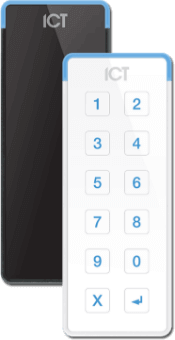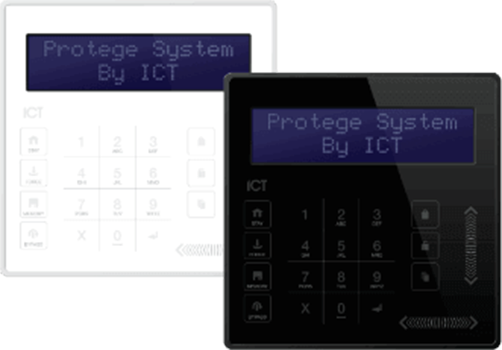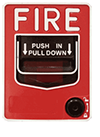Video MGMT System
 Access Control
Access Control
Voice & Data Wiring
 Burglar Alarm
Burglar Alarm
 Fire Alarm
Fire Alarm
Video MGMT System
Voice & Data Wiring
THOUGHT CENTER > Blog > Access Controls
October 18, 2023
Too busy to read? Here’s a summary:
In today's fast-paced world, the real estate and property management industries are undergoing digital transformations. One of the most significant of these transformations is the integration of smart access control with property management software.
According to a study from Software Advice, smart locks are the second-most-desired smart home amenity. According to a study cited by Apartmentguide, gated access control is the amenity most desired by potential renters—even more than hardwood floors and rooftop terraces.
Suppose you’re in the property management sector. In that case, this is your lucky day: keep on reading to understand how access control integration with PMS software is revolutionizing the property management landscape and how an integrated system can benefit your tenants, your operational efficiency, and your bottom line.
Also known as “keyless entry” and “smart lock” systems, access control systems are a combination of software, electronics, and mechanical devices that limit site access to only those with authorized credentials.
Modern access control systems don’t provide end users with mechanical keys containing grooves for unlocking. Instead, they use fobs, cards, biometrics, smartphones, and other “digital keys” that transmit identifying data to access control door readers.
When identifying data is authenticated by a door reader, it’s transmitted to a control panel to be checked against preprogrammed authorization lists and rules. If there’s a match, the panel will transmit a signal to unlock the access point in question and grant passage.
Property managers can lock or unlock doors remotely through their PMS interface. This is particularly useful for granting access to maintenance staff, visitors, and emergency services.
Temporary access codes can be generated for guests, service providers, and future tenants. These codes can be set to expire after a certain time, enhancing security while allowing potential tenants to take their time exploring units and amenities without requiring the presence of busy administrators.
All lock and unlock activities are logged in real-time and can be viewed through the PMS. This helps in monitoring unauthorized access and maintaining a record for compliance purposes.
Property managers can receive real-time notifications directly on their PMS dashboard for events like forced entry, low battery, and lock tampering.
Tenants can also be given the ability to control their own locks via a mobile app that can be integrated with the property management system. Mobile apps empower tenants to grant temporary access to guests without involving management.
Integration can facilitate automated check-in and check-out processes.
For example, a unique access code can be generated and sent to a guest upon booking confirmation and be deactivated automatically at checkout time.
Some integrations also allow for the smart lock usage to be tied to billing, where tenants can be charged for additional services like temporary guest access.
Just as importantly, tenants who are late on rent can have their access privileges to amenities restricted until they are up to date.
Both access control and PMS software can be updated remotely, ensuring the systems are always up-to-date with the latest security features.
API Integration: Most modern property management systems (PMSs) and access control systems offer Application Programming Interfaces (APIs) that allow for easy integration between systems.
By linking the two systems through an API, property managers can control access locks directly through their PMS interface.
Smart locks are installed on property doors, and their status is synced with property management software.
Different user roles (e.g., property manager, tenant, maintenance staff) are defined in the PMS, and access permissions are set accordingly in the access control system’s control panel.
If you're in the property management industry and still need to integrate access control with your property management software, now is the time to think about it seriously.
For a free site survey and security assessment, reach out to the expert security system dealers and installers at Mammoth Security. Just click to contact us and fill out the brief form.
NOT COMPLETELY SURE?
860-748-4292In property management, access control systems are a combination of software, electronic, and mechanical devices that grant site access to only those with authorized credentials. They use digital keys like fobs, cards, biometrics, and smartphones to authenticate entry.
Access control systems integrate with property management systems (PMSs) through Application Programming Interfaces (APIs). APIs empower property managers to control access locks directly from their PMS interface.
Features of integrated access control systems in property management include remote access control, time-based access, automated activity logging, advanced notification and alert settings, and advanced tenant management tools.
According to a study from Software Advice, smart locks are the second-most-desired smart home amenity. They offer keyless entry and can be controlled remotely, making them highly desirable for modern property management.
Time-based access in property management allows for the generation of temporary access codes that expire after a certain time. This enhances security while allowing potential tenants to explore units without the presence of time-constrained administrators.
Activity logs in property management help to monitor unauthorized access and maintain records for compliance purposes. All lock and unlock activities are logged in real-time and can be viewed through the PMS.
Notifications and alerts in integrated access control systems inform property managers about events like forced entry and lock tampering.
Automated check-in and checkout in property management involves generating unique access codes for guests. The codes are automatically deactivated at checkout time.